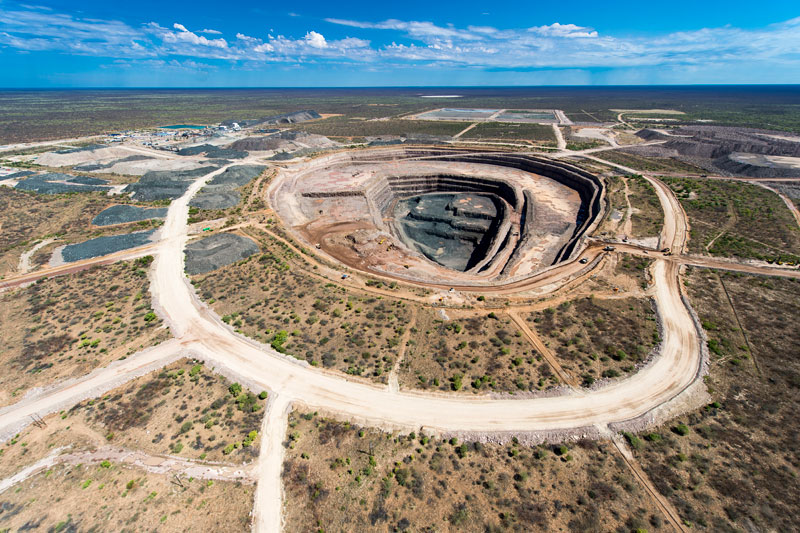Lucara Diamond Corp looks like having a combined open pit and underground future at its Karowe diamond mine, in Botswana, after a feasibility study showed the company could double the mine life of the operation for $514 million in pre-production capital.
Already one of the world’s most prolific producers of large, high value type IIA diamonds and the only diamond mine in recorded history to have produced two +1,000 ct diamonds, Karowe’s existing open pit and underground expansion showed off life of mine production of 7.8 Mct to 2040, a payback period of 2.8 years and an after-tax NPV (5% discount) of $718 million.
Eira Thomas, President and CEO, said: “Lucara is highly encouraged by the results of the Karowe Underground feasibility study which has outlined a much larger economic opportunity than first envisaged in the 2017 PEA and represents an exciting, world class growth project for our Company.
“Diamond deposits are rare and getting rarer. In this context, we are extending a mine that is in a class of its own, having produced 15 diamonds in excess of 300 carats, including 2 greater than 1,000 carats in just seven years of production. Further, we have sold 10 diamonds for in excess of $10 million each, including the record-setting 813 ct Constellation which sold for $63.1 million.”
A significant portion of the cost to expand the mine underground can be funded from cash flow, according to Thomas, and the investment is expected to be paid back in under three years, as the underground expansion allows Lucara to exploit the highest value part of the orebody first and generate more than $5.25 billion in gross revenue, she added.
The Karowe mine has produced 2.5 Mct since 2012 and generated $1.5 billion in revenue. The FS looks to double the mine life from the original mine design of 2010 and add net cash flow of $1.22 billion and gross revenue of $5.25 billion.
The long hole shrinkage (LHS) underground bulk mining method has been selected for the underground deposit, which should provide early access to higher value ore, allows for a short pay back period of 2.8 years and low operating costs of $28.43 per tonne processed, according to the company.
On the basis of a construction start in mid-2020, ore from underground mining is expected to seamlessly integrate into current operations providing mill feed starting in 2023 with a ramp up to 2.7 Mt/y to the processing plant by 2026, and the opportunity to increase throughput.
Current production rates will be maintained through the underground ramp up period.
The Underground is designed to access the South lobe kimberlite resource below the current planned bottom of the open pit (which is expected to be at approximately 700 m above sea level (masl), to a depth of 310 masl. Access to the South Lobe underground will be via two vertical shafts (production and ventilation) of approximately 765 m and 715 m deep, respectively.
The study identified key focus areas of hydrogeology, geotechnical constraints of the kimberlite and host rocks, which have been addressed through an intensive set of work programs and data collection that commenced during the PEA completed in November 2017 and were substantially updated and augmented by the FS study, the company said.










